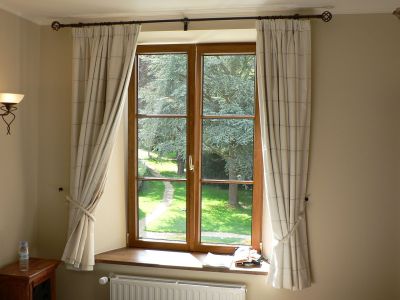A window of opportunity for CO2 reductions

Gordijnen aan venster
By Nieuw (Own work) [GFDL (http://www.gnu.org/copyleft/fdl.html) or CC-BY-SA-3.0 (http://creativecommons.org/licenses/by-sa/3.0/)], via Wikimedia Commons
More than 60 % of the total heat loss of buildings takes place through windows. Technology to significantly improve window insulation properties while reducing price and the carbon footprint associated with production and use will have major impact.
Most people now agree that human activities make a significant contribution to global climate change. The energy consumption and loss associated with buildings play an important role in greenhouse gas emissions, and windows are a prime culprit. Scientists are developing better windows with EU funding of the project WINSMART.
Windows typically fare poorly compared to the rest of a building facade when it comes to insulating, as indicated by higher U-values meaning higher transmission. The WINSMART concept combines vacuum insulation glazing (VIG) with optical transmission control schemes to lower U-values by more than 60 %, bringing them closer to those of the rest of the building envelope.
VIG is a relatively new concept building on the original double-pane glass one. The space between the panes is evacuated to less than a millionth of atmospheric pressure, with the vacuum preventing almost all convective or conductive heat exchange between the panes. In the first period, the team validated the manufacturing techniques necessary to produce the VIG.
Scientists are also targeting the embodied energy of the frames, the total energy consumption of all processes from acquiring raw materials through to recycling and disposal. Conventional materials were chosen without consideration of embodied energy. It turns out that an important reduction in the carbon footprint is possible through a better choice of materials.
Finally, the consortium is evaluating incorporation of optical transmission control technologies into the VIG to facilitate a colour change (shading) in response to the intensity of incident light (photochromic) or a small applied voltage (electrochromic). In this period, scientists selected materials and defined their use in planned devices.
In advance of a detailed life-cycle assessment (LCA), researchers defined the LCA methodology and prepared a draft LCA inventory of the proposed window system. They expect to deliver a lighter, less expensive and more energy-efficient window with lower embodied energy. Adoption as retrofit to existing buildings or in new ones will have tremendous impact on the energy efficiency of buildings and their impact on global climate change.
published: 2015-04-13

